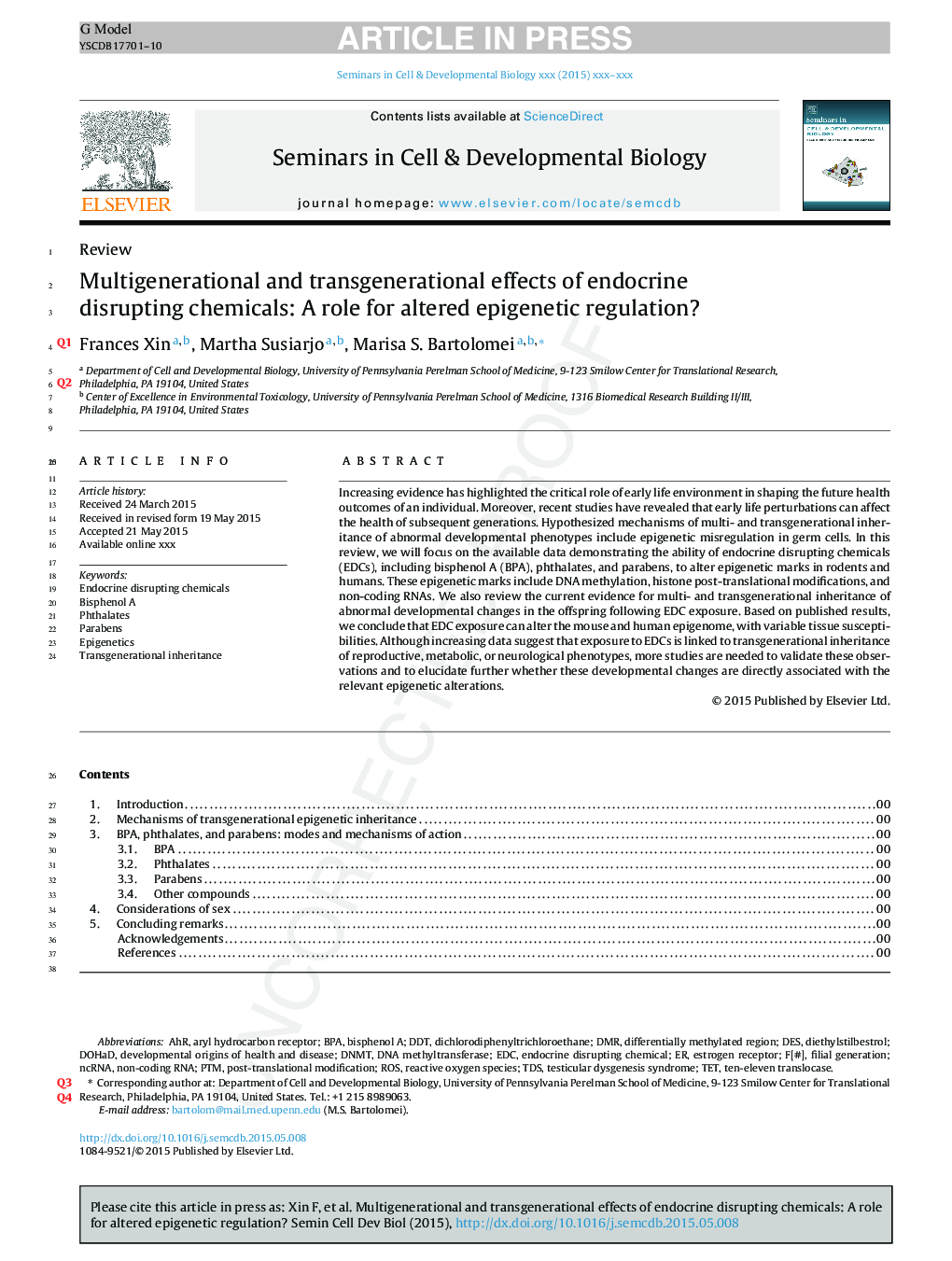| Article ID | Journal | Published Year | Pages | File Type |
|---|---|---|---|---|
| 8480357 | Seminars in Cell & Developmental Biology | 2015 | 10 Pages |
Abstract
Increasing evidence has highlighted the critical role of early life environment in shaping the future health outcomes of an individual. Moreover, recent studies have revealed that early life perturbations can affect the health of subsequent generations. Hypothesized mechanisms of multi- and transgenerational inheritance of abnormal developmental phenotypes include epigenetic misregulation in germ cells. In this review, we will focus on the available data demonstrating the ability of endocrine disrupting chemicals (EDCs), including bisphenol A (BPA), phthalates, and parabens, to alter epigenetic marks in rodents and humans. These epigenetic marks include DNA methylation, histone post-translational modifications, and non-coding RNAs. We also review the current evidence for multi- and transgenerational inheritance of abnormal developmental changes in the offspring following EDC exposure. Based on published results, we conclude that EDC exposure can alter the mouse and human epigenome, with variable tissue susceptibilities. Although increasing data suggest that exposure to EDCs is linked to transgenerational inheritance of reproductive, metabolic, or neurological phenotypes, more studies are needed to validate these observations and to elucidate further whether these developmental changes are directly associated with the relevant epigenetic alterations.
Keywords
EDCTETDMRdichlorodiphenyltrichloroethaneDnmtTDSAHRPTMncRNADOHaDBPADNA methyltransferaseNon-coding RNAROSDESpost-translational modificationEpigeneticsBisphenol ADiethylstilbestrolDDTDevelopmental origins of health and diseaseTesticular dysgenesis syndromeendocrine disrupting chemicalPhthalatesDifferentially methylated regionEndocrine Disrupting ChemicalsTransgenerational inheritanceParabensReactive oxygen speciesaryl hydrocarbon receptorEstrogen receptor
Related Topics
Life Sciences
Biochemistry, Genetics and Molecular Biology
Cell Biology
Authors
Frances Xin, Martha Susiarjo, Marisa S. Bartolomei,
